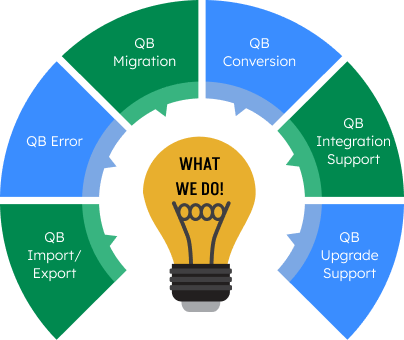QuickBooks is a widely used accounting software that helps businesses manage their finances, pay bills, track expenses, and monitor financial health. Its API (Application Programming Interface) allows developers to integrate QuickBooks functionality into their own applications, improving productivity and streamlining financial management. In this article, we’ll explore the features of QuickBooks API and how it can be used effectively by drawing insights from the Intuit Developer portal.
Table of Contents
What is the QuickBooks API?
The QuickBooks API enables developers to access the core features of QuickBooks, including customers, invoices, payments, bills, and other key functionalities. By integrating these features into custom applications, businesses can efficiently automate various financial management tasks and workflows.
Key Features of QuickBooks API
- Robust Authentication: The API uses OAuth 2.0 for secure authentication, ensuring that user data is protected and accessed only by authorized applications.
- Comprehensive Documentation: Intuit provides extensive documentation on the QuickBooks API, including guides, tutorials, and sample code, making it easy for developers to understand and implement the API in their applications.
- Scalable: The QuickBooks API can handle a high volume of requests, allowing businesses to grow and scale their financial management without sacrificing performance or reliability.
- Multi-Platform Support: The API supports a variety of programming languages and platforms, such as Java, .NET, Ruby, and more, making it accessible to a wide range of developers.
Struggling With Accounting or Bookkeeping?
Talk to our experts in minutes — No wait time!
- Free Consultation
- Fast Response
- Trusted Experts

You may read this: QuickBooks Online Paylocity Integration
Why Use QuickBooks API Integration?
Here’s why thousands of businesses rely on QuickBooks API Integration:
- Save Time – Automate data entry and avoid repetitive tasks
- Reduce Errors – Sync data accurately between systems
- Improve Insights – Get up-to-date reports from combined data sources
- Boost Productivity – Let your apps work together without human intervention
QuickBooks API Integration Options
There are two main ways to integrate with QuickBooks:
1: QuickBooks Online API
- Best for cloud-based solutions
- Uses REST API with OAuth 2.0 authentication
- Ideal for e-commerce, CRMs, and cloud apps
2: QuickBooks Desktop API
- Uses the QuickBooks Web Connector or SDK
- Best for on-premise applications
- Requires the QuickBooks Desktop software running locally
Guide to Integrate with QuickBooks API
Integrating with the QuickBooks Online API is a straightforward process that can be achieved in just a few steps. This guide walks you through connecting your application to the QuickBooks API to sync and manage data efficiently.
Step 1: Create an Intuit Developer Account
To begin, you need to create an account on the Intuit Developer portal. Once your account is set up, you will be provided with a Sandbox QuickBooks Online company on developer.intuit.com, which can be utilized for development and testing purposes.
Step 2: Set Up an App in Your Developer Account
Next, create an app within your developer account. Doing so will provide you with a set of client ID and client secret keys that are essential for connecting your app to the QuickBooks company (either sandbox or production) and obtaining OAuth tokens. You can find these client keys under the “Keys & OAuth” tab of your app.
Step 3: Generate OAuth Tokens Using Client Keys
With your client keys in hand, the next step is to generate OAuth tokens. You can accomplish this using the OAuth Playground or programmatically through one of the available SDKs.
Once you have generated the tokens, you can use them to access the API and synchronize data between your application and QuickBooks. Keep in mind that OAuth tokens expire after 60 minutes, so always save both the access and refresh tokens. The refresh token will be necessary to obtain new tokens when the current ones expire.
Additional Resources
To further assist you with integrating the QuickBooks API, the Intuit Developer portal offers several valuable resources, including:
- API Reference Guide: Comprehensive documentation on the QuickBooks API, covering various endpoints, data objects, and best practices.
- API Explorer Tool: An interactive tool that allows you to explore and test the API, making it easier to understand how the different endpoints work.
- SDKs: Software development kits available for various programming languages, simplifying the process of integrating the QuickBooks API into your application.
- Sample Code: Example code snippets demonstrating how to use the API effectively in different programming languages.
With these resources and the steps outlined above, you’ll be well on your way to a successful QuickBooks API integration, streamlining your financial management processes and improving productivity.
Also read this: How to integrate QuickBooks with eBay
Benefits of Using a QuickBooks API Integration Service
If you don’t have in-house developers, using a QuickBooks API Integration Service can:
- Save time and development costs
- Ensure secure, compliant connections
- Provide custom workflows tailored to your business
- Offer ongoing support and troubleshooting
Conclusion
The QuickBooks Integration API is a powerful way to connect QuickBooks with the rest of your business tools. Whether you want to sync invoices, automate payroll, or get unified financial reports, QuickBooks API Integration can make it happen.
If you need help, a professional QuickBooks Integration Service can handle the setup, customization, and ongoing support, so you can focus on running your business while your systems work seamlessly together.
Frequently Asked Questions
Q 1: What is the QuickBooks Integration API?
Ans: The QuickBooks Integration API is a set of tools and endpoints that allows developers to connect third-party applications with QuickBooks for seamless data exchange.
Q 2: How does QuickBooks API integration work?
Ans: QuickBooks API integration works by enabling your app to securely send and retrieve financial data, such as invoices, customers, and payments, directly to and from QuickBooks.
Q 3: What are the benefits of using a QuickBooks API integration service?
Ans: Using a QuickBooks API integration service ensures faster setup, secure data handling, reduced manual entry, and real-time synchronization of accounting data between platforms.
Q 4: Is QuickBooks API integration secure?
Ans: Yes, QuickBooks API integration uses OAuth 2.0 authentication and encrypted data transfer, ensuring your business and customer information remains safe.
Q 5: Can I integrate QuickBooks API with my existing software?
Ans: Yes, the QuickBooks API supports integration with CRMs, ERPs, eCommerce platforms, payment gateways, and other custom applications for streamlined business operations.

Adams Williams
Adams Williams is a seasoned accounting professional with over 4 years of experience in bookkeeping, financial reporting, and business accounting solutions. Specializing in QuickBooks software, Adams combines technical expertise with clear, accessible content writing to help businesses streamline their financial processes. His insightful guides and how-to articles are crafted to assist both beginners and seasoned users in navigating accounting software with confidence.



